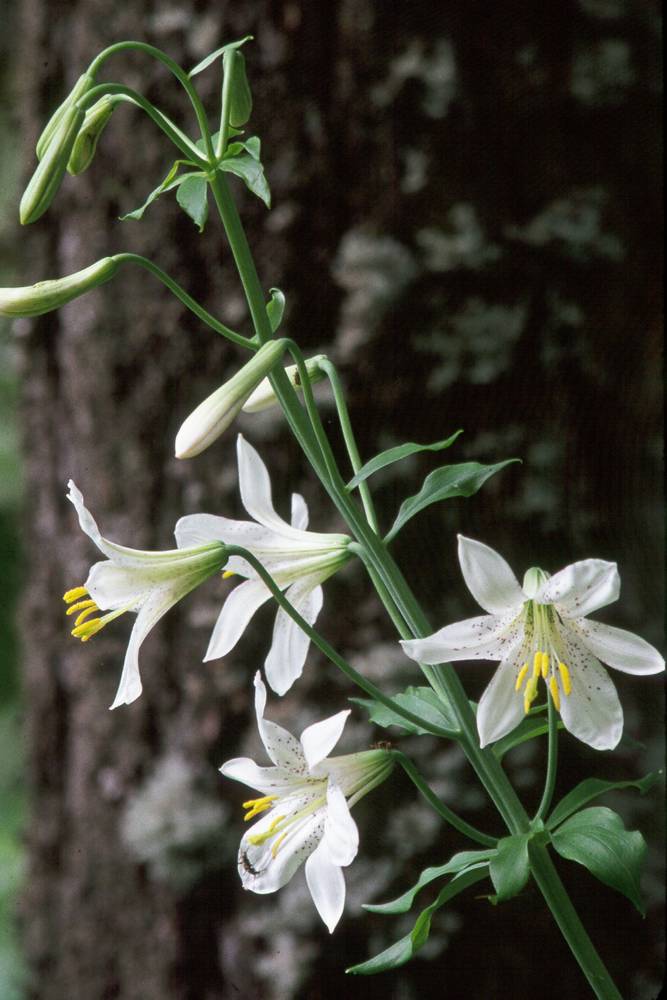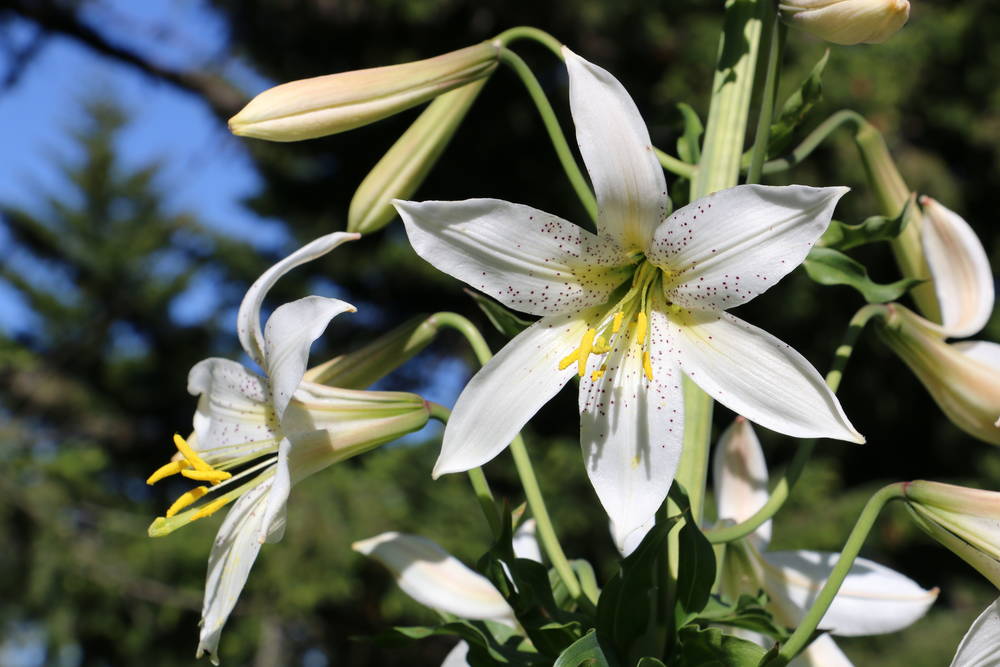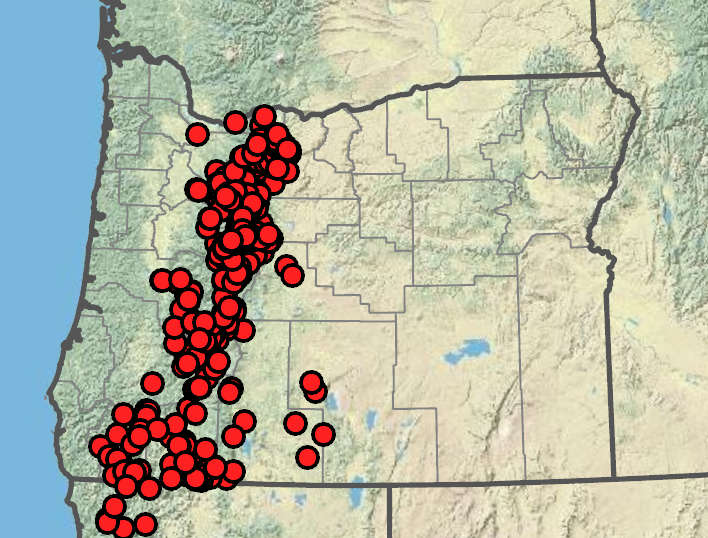Lilium washingtonianum
Lilium washingtonianum ssp. purpurascens
Cascade lily
Cascade lily, Washington lily
in 1–9(14) whorls; horizontal to nearly clasping stem, generally oblanceolate, 3–13 cm;
margin wavy or not.
flowers 1–15(33), nodding to ascending.
slightly bilateral, roughly trumpet-shaped, strongly fragrant;
perianth segments (5.6)6.2– 9.5(10.5)cm, white, becoming deep pink or lavender; magenta spots minute;
inner segments wider and strongly oblanceolate;
distal 33% portion recurved;
outer surface generally purplish (often faintly so);
stamens slightly longer in length than perianth;
filaments roughly parallel;
anthers 8–15 mm, cream, becoming yellow;
pollen pale (bright) yellow;
pistil 7.5–10.4 cm.
2.7–5.8 cm, generally ribbed.
=24.
Lilium washingtonianum
Lilium washingtonianum ssp. purpurascens
[Species with one variety or subspecies in Oregon.]
Douglas-fir forests, roadsides, burned clearcuts. Flowering Jun–Aug. 50–2000m. Casc, ECas, Sisk, WV. CA. Native.
The Cascade lily is pollinated by sphinx and doubtless other moths in the family Sphingidae. Nectar secretion and scent production are timed to their arrival at dusk. The open nature of the flower and copious nectar secretion attract many diurnal visitors including a variety of butterflies, bees, and flies, but these insects are not significant pollinators.
Mark Skinner





